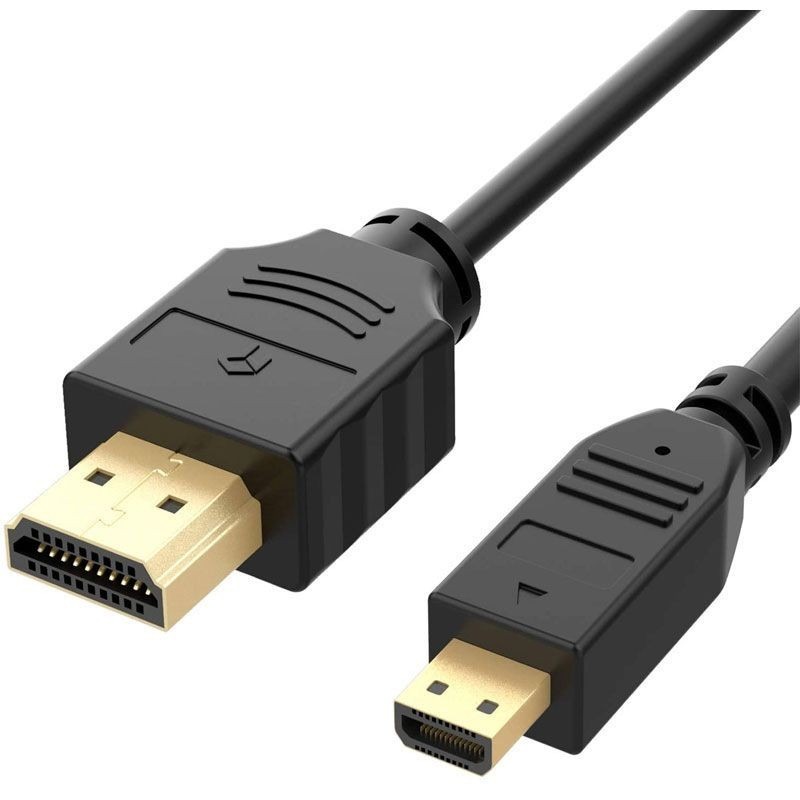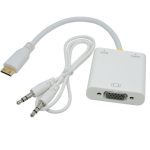Contents
- 1 Introduction to HDMI Versions
- 2 Key Differences Between HDMI 1.3 and 1.4
- 3 Compatibility Considerations for Devices and Cables
- 4 Practical Performance: Real-World Usage Scenarios
- 5 HDMI 1.3 vs. 1.4 in Home Theatre Setups
- 6 Future-Proofing Your Setup: Is HDMI 1.4 Enough?
- 7 Conclusion: Making the Right Choice for Your Needs
Introduction to HDMI Versions
In the world of digital video and audio, HDMI stands as a standard. HDMI, or High-Definition Multimedia Interface, is the go-to for connecting high-definition devices. Since its arrival, HDMI has gone through several versions. Each promises better performance and features. HDMI 1.3 and 1.4 are two such versions. Users often compare these to understand which suits their needs. HDMI 1.3 was a leap forward in its time. It supported higher resolution and audio quality. But technology evolves, and HDMI 1.4 brought more advancements. These include network capabilities, 3D support, and more. In this guide, we’ll discuss key differences between HDMI 1.3 vs. 1.4. This will help users make informed choices for their setups.
Key Differences Between HDMI 1.3 and 1.4
Understanding the distinctions between HDMI 1.3 and 1.4 is essential for optimizing your digital experience. Let’s explore several crucial improvements that HDMI 1.4 has over its predecessor.
Resolution and Audio Enhancements
Upgrading from HDMI 1.3 to 1.4 unlocks significant improvements. HDMI 1.4 supports resolutions up to 4K (3840×2160 at 30Hz), a jump from 1.3’s 1080p limit. This ensures crystal-clear images for 4K content. Audiophiles benefit too, as 1.4 introduces an Audio Return Channel (ARC). This handy feature allows TVs to send audio back to a receiver or soundbar without extra cables.
Networking Capabilities with HDMI 1.4
HDMI 1.4 isn’t just about better pictures and sound. It includes an Ethernet channel, allowing connected devices to share an internet connection. Streamlining your setup reduces cable clutter and simplifies internet access for smart TVs or game consoles.
3D Support and Gaming Enhancements
For immersive viewing, HDMI 1.4 offers 3D support for movies and games. It’s a game-changer for gamers and movie buffs alike, enabling 3D visuals with compatible displays. Enhanced gaming performance is a highlight, with faster refresh rates and improved color depth adding to the experience.
Compatibility Considerations for Devices and Cables

When assessing HDMI 1.3 vs. 1.4, compatibility is a key factor. Devices and cables designed for HDMI 1.3 may not exploit all features of HDMI 1.4. It’s crucial to understand the compatibility of your current equipment with these versions.
Most devices with HDMI 1.3 ports can connect to HDMI 1.4 cables. However, they won’t benefit from new features like ARC or Ethernet over HDMI. On the other hand, HDMI 1.4 devices often work fine with HDMI 1.3 cables for standard tasks. But, for 4K content or networking functions, an HDMI 1.4 cable is necessary.
Ensure your devices and cables match the HDMI version needed for your desired performance. Also, upgrading older equipment might be required to enjoy the full capabilities of HDMI 1.4.
Upgrading from HDMI 1.3 to 1.4: What You Need to Know
If you’re considering upgrading from HDMI 1.3 to 1.4, it’s not just about cables. The devices at both ends of the cable need to support HDMI 1.4. Check your equipment’s specifications before upgrading.
For a successful upgrade, here is what you should keep in mind:
- TV and Receiver Compatibility: Ensure your TV, receiver, or sound system supports HDMI 1.4 features, especially ARC.
- Cable Quality: Purchase certified HDMI 1.4 cables for reliable performance, particularly if you aim to transmit 4K content or use the Ethernet channel.
- Device Firmware: Update the firmware of your devices to the latest version. This might enable some HDMI 1.4 features on HDMI 1.3-compatible devices.
- Consider Future Needs: With evolving standards like HDMI 2.0 and beyond, consider whether HDMI 1.4 will meet your future requirements. This could influence your decision to upgrade now or wait.
Upgrading can offer significant improvements in your audio-visual experience. But, assess your current needs and equipment compatibility carefully to make an informed decision.
Practical Performance: Real-World Usage Scenarios

Evaluating HDMI 1.3 and 1.4 isn’t just theoretical. How they perform in real-world usage matters. Let’s dive into how these versions fare across different scenarios.
- Watching Movies and TV Shows: With HDMI 1.4, movie buffs enjoy 4K resolution. This grants a cinema-like experience right at home. HDMI 1.3 users are limited to 1080p, lacking that ultra-high definition clarity.
- Gaming: For gamers, HDMI 1.4’s faster refresh rates and supports for 3D gaming can enhance play. HDMI 1.3 does the job, but it lacks these advancements, which may affect immersion and responsiveness.
- Connecting Multiple Devices: Those who connect various devices benefit from HDMI 1.4’s Ethernet channel. It allows for Internet access without an extra cable. This is not an option with HDMI 1.3, making HDMI 1.4 superior for streamlined setups.
- Home Audio Systems: Audiophiles using HDMI 1.4 can use the Audio Return Channel (ARC) for simpler connectivity. This feature is absent in HDMI 1.3, making 1.4 the ideal choice for connecting TVs to sound systems.
In these everyday scenarios, HDMI 1.4 promises enhancements that may significantly improve your entertainment experience. While HDMI 1.3 can suffice for basic needs, 1.4 brings functionality that aligns with the latest trends in digital media.
HDMI 1.3 vs. 1.4 in Home Theatre Setups
Setting up a home theatre brings excitement and a bit of complexity. Choosing between HDMI 1.3 and 1.4 cables is one such decision. Let’s simplify what this choice means for your home entertainment.
- Picture Quality: A key advantage of HDMI 1.4 in home theatres is its support for 4K resolution. If your home theatre includes a 4K TV or projector, HDMI 1.4 will ensure you get the full visual potential. With HDMI 1.3, you’re capped at 1080p, which is crisp but not as detailed as 4K.
- Sound Systems: Sound is half the experience in a home theatre. HDMI 1.4’s Audio Return Channel (ARC) means a single cable can carry sound both to and from your TV and sound system. This cleans up wire mess and makes setup easier.
- 3D Content: Love 3D movies? HDMI 1.4 supports 3D output, allowing you to dive into a more immersive experience. With HDMI 1.3, 3D isn’t an option, putting a limit on your theatre’s capabilities.
- Smart Features: If you have a smart TV, the Ethernet channel of HDMI 1.4 is a benefit. It lets your TV and other devices share an internet connection, useful for streaming services.
In summary, HDMI 1.4 seems to take the lead for a cutting-edge home theatre setup. Its resolution, audio, 3D, and networking improvements are in line with modern demands. However, if your current setup and content don’t require these features, HDMI 1.3 could still serve you well.
Future-Proofing Your Setup: Is HDMI 1.4 Enough?

As technology advances, future-proofing becomes a critical concern for consumers. Is HDMI 1.4 enough to meet the upcoming demands?
- Advancements Beyond HDMI 1.4: HDMI 1.4 offers significant improvements over 1.3, like 4K support and Ethernet sharing. But newer HDMI versions, like 2.0 and 2.1, offer higher bandwidth and features like Dynamic HDR and 8K support. Considering that content is constantly evolving, these newer versions are becoming standard.
- 4K Content and Bandwidth Requirements: While HDMI 1.4 supports 4K, it has a 30Hz limit. More recent versions allow 4K at higher refresh rates, which is vital for smoother motion in videos and games. High-frame-rate content is increasing in popularity, so this may be a limiting factor in the near future.
- Evolution of Gaming Consoles and PCs: Gaming is pushing boundaries with consoles now supporting 120Hz at 4K resolution. HDMI 1.4 cannot keep up with these demands, so serious gamers need to consider more recent HDMI versions for an optimal experience.
- Smart Home and IoT Devices: As the Internet of Things (IoT) continues to grow, connectivity between devices becomes more complex. HDMI 1.4’s Ethernet channel is a start, but as homes get smarter, bandwidth and feature demands may exceed what HDMI 1.4 offers.
In conclusion, while HDMI 1.4 meets many current needs, it may fall short in the face of rapidly evolving technology. Considering future trends and your long-term needs is key when deciding whether to invest in newer HDMI versions.
Conclusion: Making the Right Choice for Your Needs
When choosing between HDMI 1.3 and 1.4, your unique needs are key. Here are factors to consider:
- Content Quality: Do you crave 4K resolution? HDMI 1.4 is a must. Happy with 1080p? HDMI 1.3 works.
- Internet Connectivity: Want to cut down on cables? HDMI 1.4 offers an Ethernet channel for this purpose.
- Latest Tech: Love 3D movies or advanced gaming? HDMI 1.4 supports these features.
- Audio Systems: Need better audio management? HDMI 1.4’s ARC simplifies connections with audio devices.
Keep in mind your current devices. They must support HDMI 1.4 to use its features. Also, think ahead. Will HDMI 1.4 fulfill future needs, or will newer versions like HDMI 2.0 be better? Make sure the cable quality is up to par. This ensures reliable service and the best possible experience.
In the end, balance your desires with practicality. Think about what you really need versus what would be nice to have. This way, you won’t over-invest in tech that doesn’t serve you. If 4K, 3D, and ARC are important for you, go for HDMI 1.4. If not, HDMI 1.3 should suffice for now. Consider your budget, needs, and the pace of tech advances in your decision.
The right choice in HDMI cables can enhance your viewing and gaming experiences. It can also help manage your audio-visual setup more efficiently. Choose wisely to get the most out of your digital media adventures.

